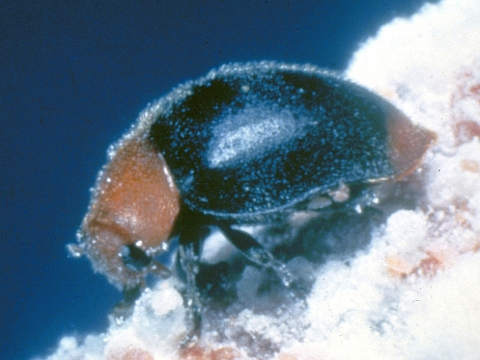 |
| Mealybug Destroyer |
I used my standard approach to these problem - doing an image search for common pests of gourds, but I had no luck. So I searched for "white insect" and there it was, on the first page of results - the mealybug destroyer larva. Once I discovered it was a beneficial insect, I quickly relocated back to the gourd patch.
 | |
| Mealybug Destroyer Larva |
Normally they are cold-sensitive and would need to be re-introduced every spring, but the climate here may be warm enough for them to overwinter. Adult mealybug destroyers feed on all stages of mealybugs, even laying their eggs in the mealybug egg sac - when their eggs hatch, the MD larvae begin feeding on the mealybug eggs. They even feed on honeydew, a sticky, sugary substance secreted by mealybugs. Although a lot larger that mealybug larvae, the MD larvae have the same wooly appearance and may be overlooked by their prey - a case of aggressive mimicry.
So if you see these in your garden, leave them. More Mealybug Destroyers mean fewer mealybugs.

No comments:
Post a Comment